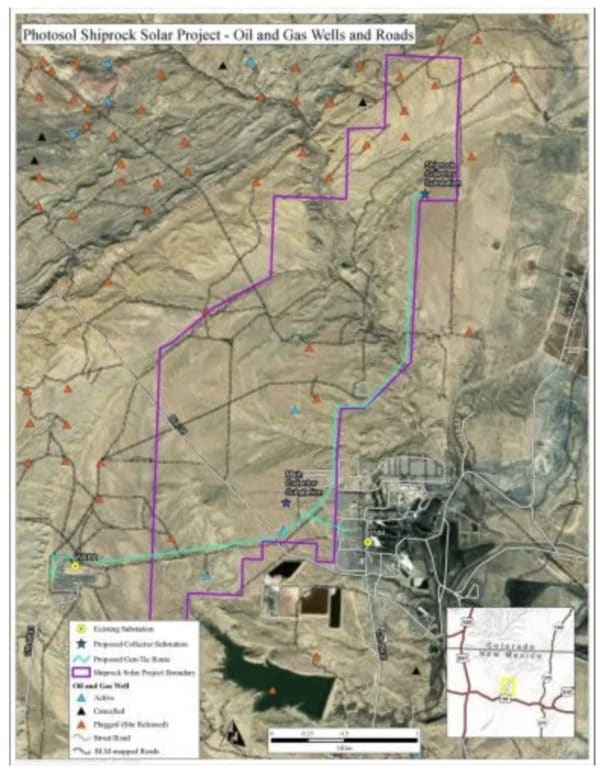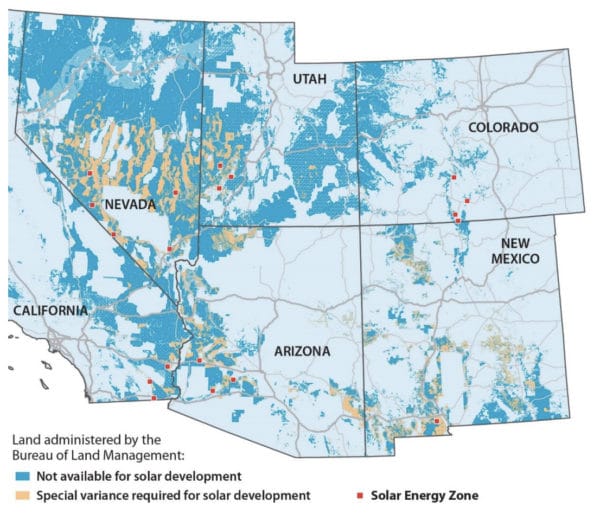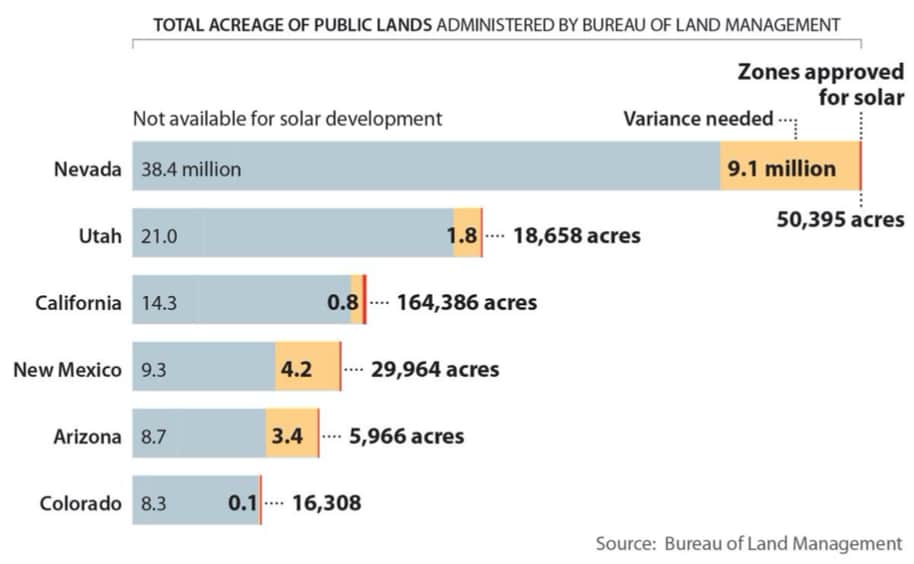A New Mexico coal-to-solar project highlights the siting and permitting challenges for solar projects across the Southwest’s federally managed lands.

Photosol US must obtain a variance permit to develop the 372 MW Shiprock solar project in New Mexico, because the project is not on the 0.2% of Southwestern federal lands designated a Solar Energy Zone. The project is adjacent to the coal-fired San Juan Generating station, which is set to close in 2022.
Fortunately, the Shiprock project is within the one-sixth of federally managed land in the Southwest where a solar variance is possible. The other five-sixths of the land is off-limits to solar development, as reported in a paper by the Institute for Energy Economics and Financial Analysis (IEEFA).
Still, applying for a variance involves “a byzantine approval process,” the paper says, and issuance of a permit is not assured.
The Bureau of Land Management (BLM), which manages the federal lands, “has ignored and continues to overlook most possibilities” for utility-scale solar, the authors say. Renewable energy development accounts for less than 1% of economic activity on BLM lands, while oil and gas account for 70%, they say, citing BLM data.
28 to date
In a tale of two bureaus, the paper highlights the BLM’s recent approval of the 690 MW Gemini Solar Project in Nevada, which it calls “an exemplary model of streamlined bureaucratic decision-making.” And it counts 28 utility-scale solar projects approved by BLM offices in California, Nevada, and Arizona.
Yet the BLM’s most recent data from late 2018 show it has “has no operational utility-scale presence in Colorado, New Mexico, or Utah,” despite hundreds of thousands of acres in each state where solar is eligible, either in a Solar Energy Zone or by variance.
“Utility-scale solar variance approvals on the 19.8 million acres of eligible BLM lands across the Southwest may depend on the attitude, bandwidth, and competence of BLM staff at state- and field-level offices,” say the authors, “especially in states and field-office areas where little or no such development has ever occurred.”
The authors note that Solar Energy Zones, shown as red dots in the map below, are absent in the Four Corners area of northwestern New Mexico. This is “an especially problematic omission,” they say, given that as coal-fired units in the area close, transmission capacity “remains in abundance.”

Reconsider policies
After reviewing BLM policy since 2001, the authors conclude that the requirement for “a lengthy and maze-like variance process to proceed with electricity-generation modernization in the Southwest— in the Four Corners region, in particular—suggests it is time for the BLM to reconsider its restrictive land-use policies.” Doing so would place renewable energy development “on an equal footing with competing interests and help local communities that are in dire need of reinvestment.”
“Stronger direction from above may be required,” they conclude.
The BLM press office provided this statement: “The BLM has a multiple use mandate to manage lands for a variety of purposes, including energy development. The BLM identifies primary and secondary areas for solar development based on the level of conflict with valuable resources or other important land uses, such as grazing, timber harvesting, public recreation, conservation, and the protection of cultural and historical sites. Accordingly, in some areas the BLM fulfills its mission by prioritizing energy development, while in others the BLM prioritizes other important uses.”
IEEFA analysts Karl Cates, Seth Feaster and Dennis Wamsted wrote the paper, titled “Federal Land Agency Lags on Solar Development Approvals Across Southwest U.S.”
This content is protected by copyright and may not be reused. If you want to cooperate with us and would like to reuse some of our content, please contact: editors@pv-magazine.com.








By submitting this form you agree to pv magazine using your data for the purposes of publishing your comment.
Your personal data will only be disclosed or otherwise transmitted to third parties for the purposes of spam filtering or if this is necessary for technical maintenance of the website. Any other transfer to third parties will not take place unless this is justified on the basis of applicable data protection regulations or if pv magazine is legally obliged to do so.
You may revoke this consent at any time with effect for the future, in which case your personal data will be deleted immediately. Otherwise, your data will be deleted if pv magazine has processed your request or the purpose of data storage is fulfilled.
Further information on data privacy can be found in our Data Protection Policy.